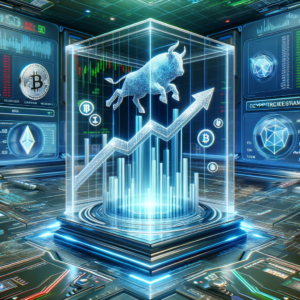In the rapidly evolving world of financial markets, where volatility is the only constant, risk management emerges as a cornerstone of sustainable trading strategies. Traditional risk assessment methods, reliant on historical data and static models, are increasingly being complemented—and in some cases replaced—by artificial intelligence (AI). AI’s ability to analyze vast datasets, learn from market patterns, and predict future outcomes has transformed it into a pivotal tool in traders’ arsenals, redefining how risks are assessed and managed.
Understanding AI in Risk Management
AI in risk management involves the use of machine learning algorithms, data analytics, and predictive modeling to foresee potential market changes and mitigate risks associated with trading. By integrating AI, traders can leverage computational power to extract, process, and analyze large quantities of data at speeds and accuracies far beyond human capabilities.
Dynamic Risk Assessment
One of the fundamental advantages of AI in risk management is its dynamic nature. Traditional risk assessment tools often fail to adapt quickly enough to changing market conditions, whereas AI systems can:
- Continuously Learn and Adapt: AI models are built to learn from new data, allowing them to adapt to changing market dynamics in real-time. This continuous learning process enables traders to stay ahead, even in tumultuous markets.
- Predictive Insights: Through advanced algorithms, AI can identify potential risk factors before they become apparent. These predictive capabilities allow traders to adjust their strategies proactively, rather than reacting to events after they occur.
Enhancing Decision Making
AI augments decision-making processes by providing comprehensive, data-driven insights. This helps traders make informed decisions by considering various risk factors and potential market scenarios.
- Scenario Analysis and Simulation: AI can simulate various trading scenarios based on historical and real-time data. This “what-if” analysis helps traders understand potential outcomes and prepare for different market conditions without exposing actual capital.
- Sentiment Analysis: By analyzing market sentiment through news articles, social media, and other textual data, AI helps gauge the market’s emotional climate. Understanding sentiment is crucial for predicting short-term movements driven by traders’ reactions to news events.
Portfolio Optimization
AI significantly enhances portfolio management by optimizing asset allocation to balance returns against risk exposure. It uses sophisticated algorithms to diversify investments effectively, minimizing risk while potentially improving returns.
- Automated Adjustments: AI can automatically rebalance portfolios in response to perceived changes in risk, ensuring that the risk level remains consistent with a trader’s risk appetite.
- Tailored Risk Profiles: AI can create personalized risk profiles for individual traders, taking into account their risk tolerance, investment goals, and other personal factors. This customization ensures that trading strategies are aligned with personal risk management objectives.
Real-Time Risk Monitoring
Real-time monitoring is another area where AI excels. By continuously analyzing price movements, news, and economic indicators, AI systems can provide immediate alerts on potential risks.
- Anomaly Detection: AI algorithms are excellent at detecting anomalies that could indicate market manipulation or errors in trading activity, allowing traders to take corrective action swiftly.
- Risk Aggregation: AI tools aggregate risk across various portfolios and assets, providing a holistic view of exposure. This aggregation is vital for large institutions managing multiple assets and trading strategies.
Challenges and Ethical Considerations
While AI offers substantial improvements in risk management, it also brings challenges and ethical considerations. Dependence on algorithms may lead to over-optimization or failure to foresee ‘black swan’ events. Additionally, transparency in AI processes is crucial to ensure they are free from biases and errors.
Conclusion
AI has undoubtedly become a game-changer in risk management within the trading domain. It provides a sophisticated, dynamic, and comprehensive approach to identifying, assessing, and mitigating risks. As financial markets continue to grow in complexity, the integration of AI into risk management strategies will become increasingly standard, driving the future of trading towards more secure, efficient, and profitable outcomes. By leveraging AI, traders can navigate the intricacies of modern financial markets with greater confidence and precision, turning volatility into opportunity.









